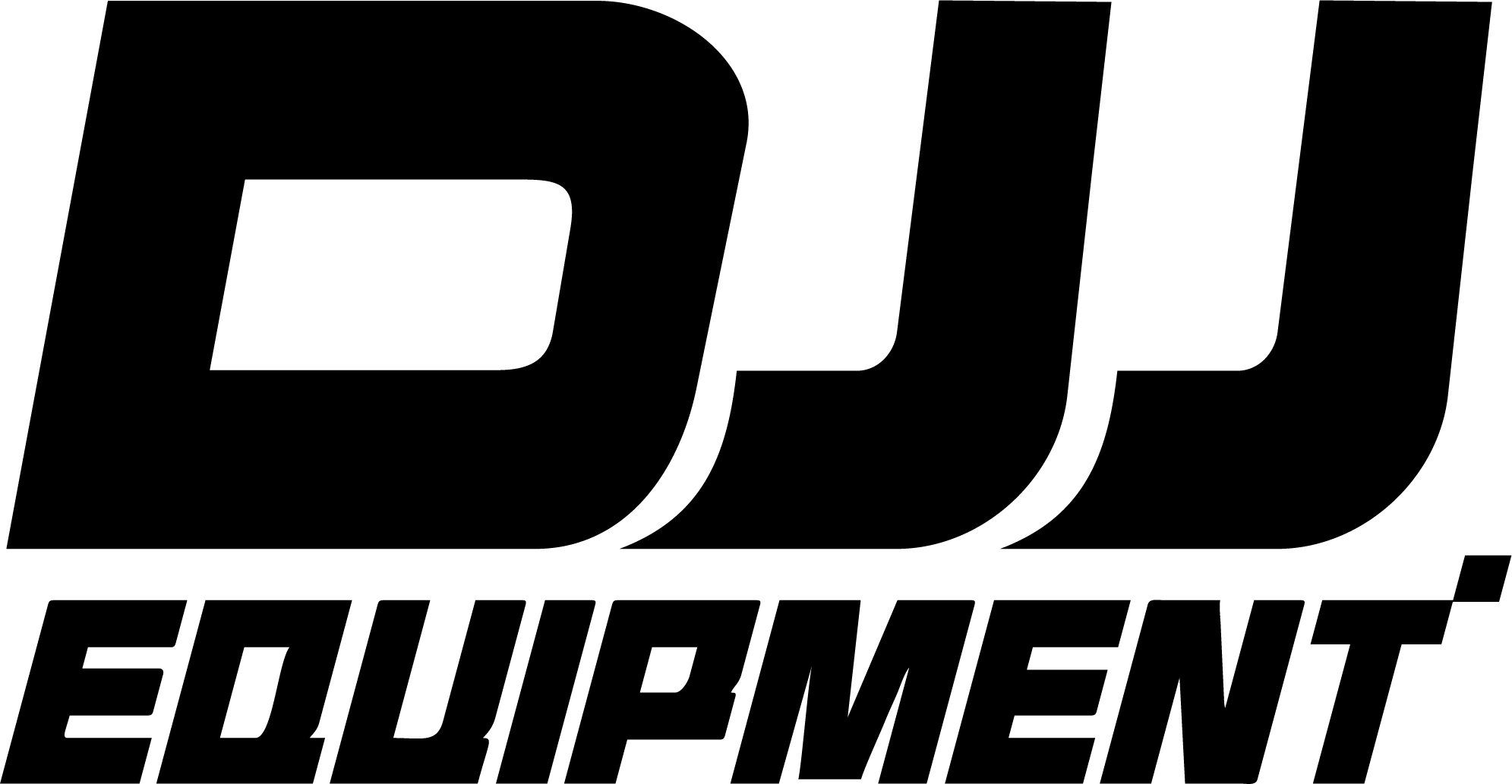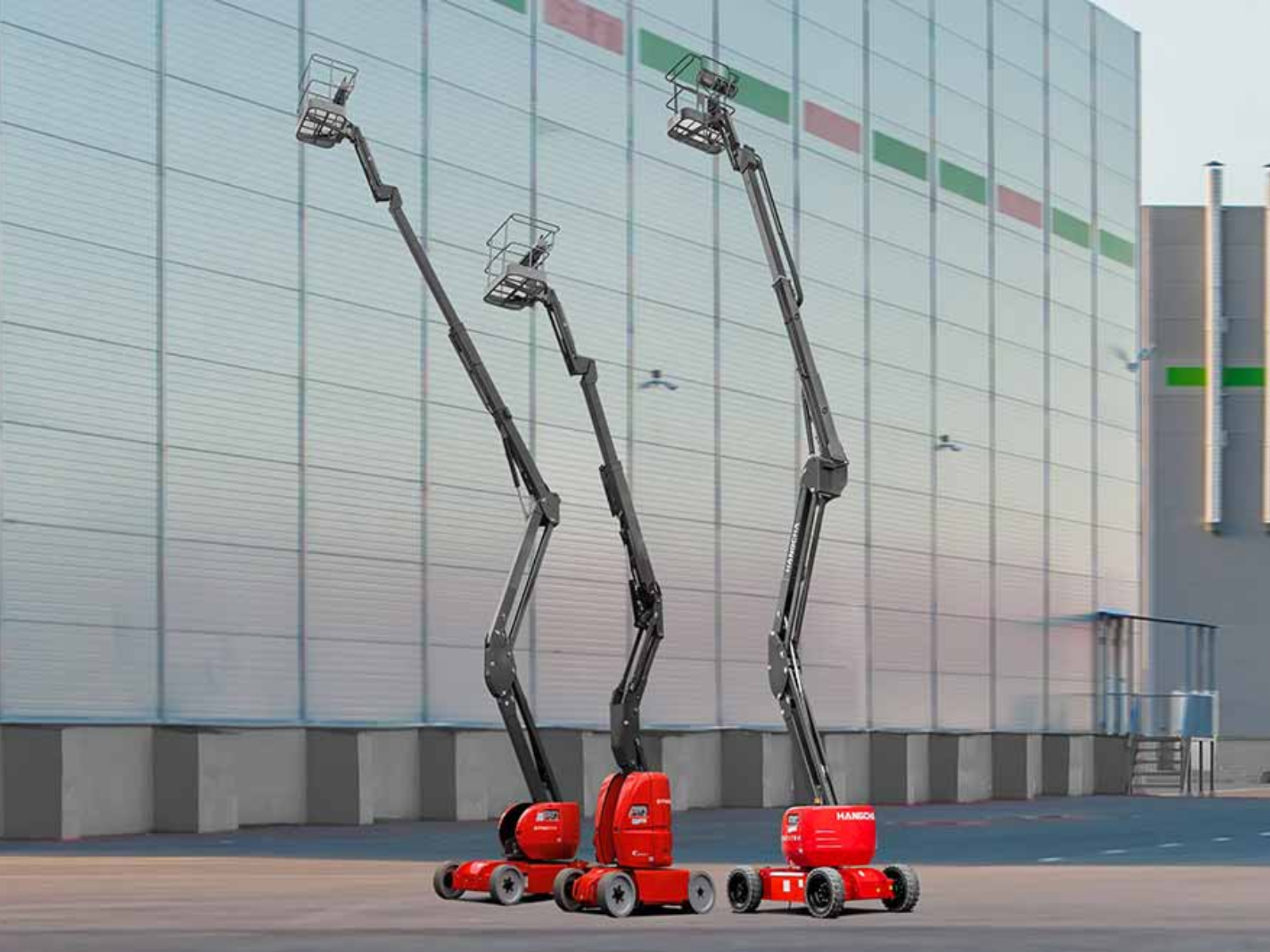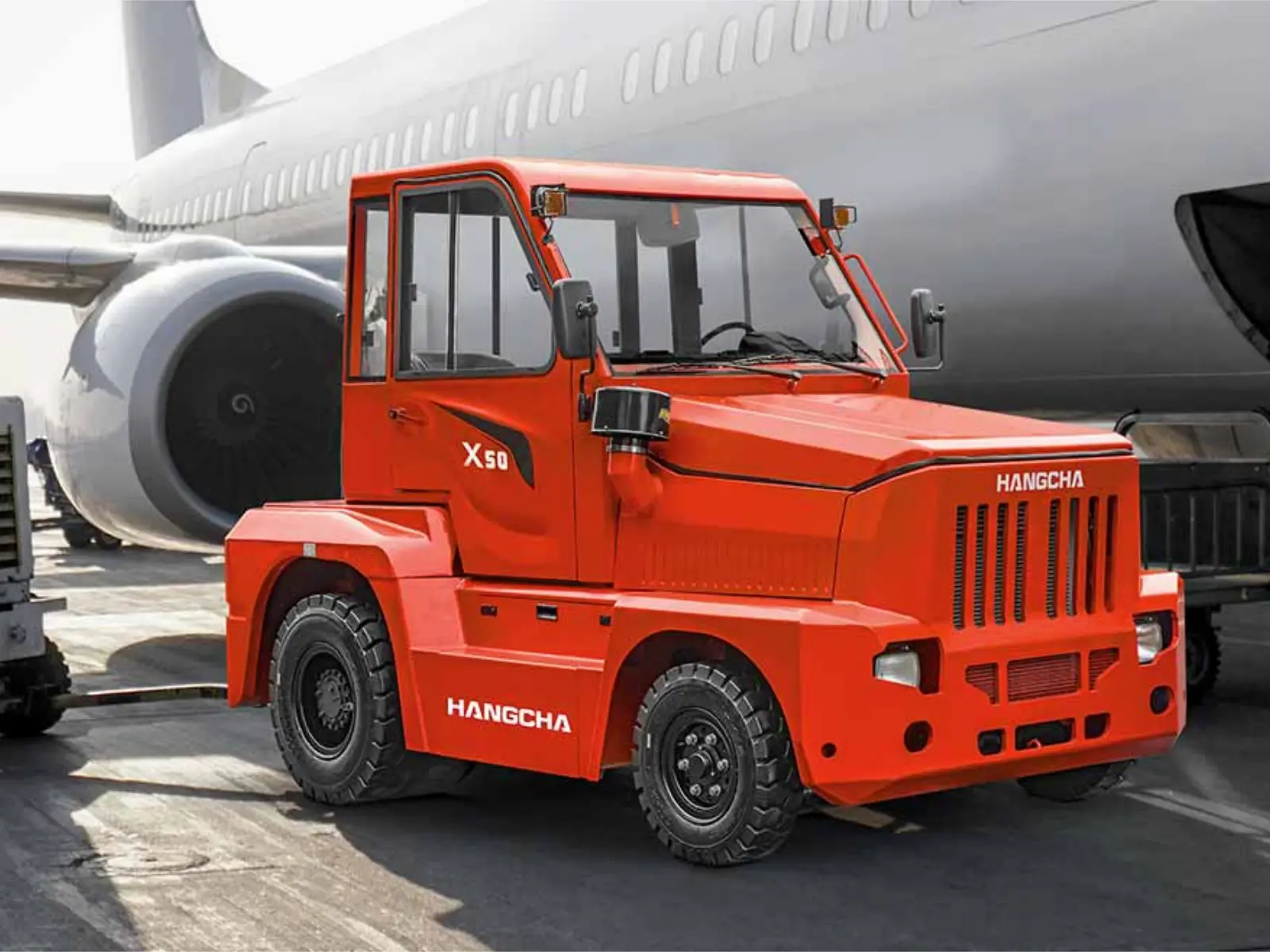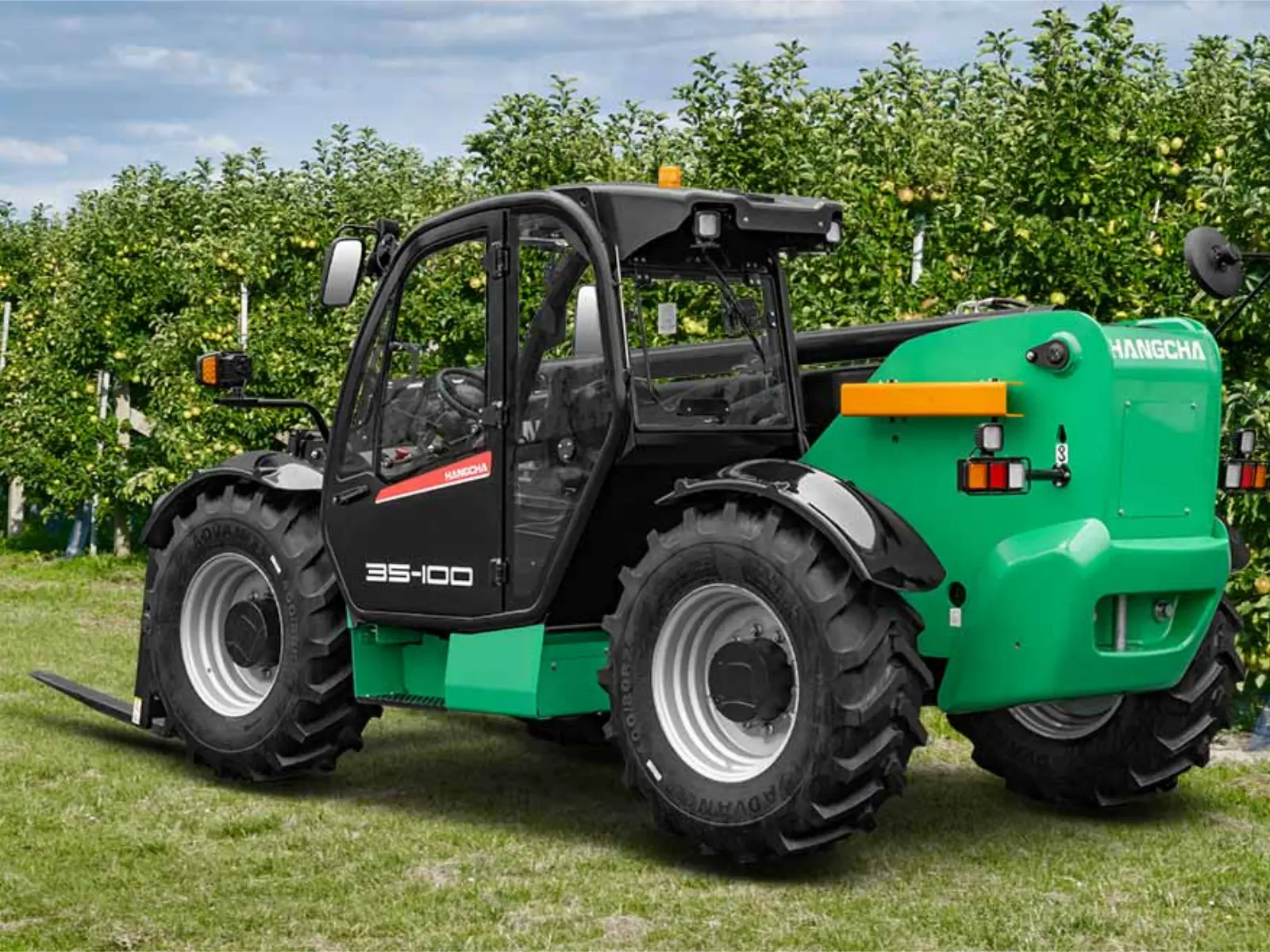In modern construction, maintenance, and industrial sectors, a Boom Lift has become an indispensable tool. A Boom Lift is an elevating work platform (EWP) designed to safely lift workers and tools to elevated heights. It features an extendable arm, known as a “boom,” with a bucket or platform at the end for workers to stand in and perform tasks. Boom Lifts can either be self-propelled or trailer-mounted.
In this article, we’ll cover the definition of a Boom Lift, the main types, common applications, and how they work to help you choose the right Boom Lift for your needs.
What is a Boom Lift?
A Boom Lift is a type of elevating work platform (EWP) designed to safely lift workers and tools to elevated heights. It has an extendable arm (boom) with a bucket or platform attached at the end, allowing workers to perform tasks in high or hard-to-reach places.
Types of Boom Lifts
Telescopic Boom Lifts (Straight Boom Lifts)
Telescopic Boom Lifts are equipped with a long, rigid arm that extends to reach required heights or specific positions. They are perfect for large, open work areas and can be used for tasks that require straight-line height or extension.
Common Uses:
- Industrial maintenance
- Electrical work
- Painting and cleaning
- Building inspections
- Tree pruning and any task that requires access to multi-story buildings
Articulating Boom Lifts (Knuckle Booms)
Articulating Boom Lifts consist of several jointed sections, connected by “knuckles,” allowing for more flexible movement. The arm can extend and bend, helping workers navigate obstacles or reach hard-to-reach places. These lifts are great for working in tight spaces and can rotate for precise positioning.
Common Uses:
- Building Maintenance: For window cleaning, exterior wall repairs, and painting.
- Gardening and Tree Maintenance: For landscaping and pruning trees in high places.
- Industrial Facility Maintenance: Useful in factories and warehouses for accessing equipment and lights overhead.
- Public Utilities and Telecommunications: For installing and maintaining electrical lines, telecom towers, and street lights.
- Film and Photography: Often used to set up camera platforms, lighting rigs, and for aerial shots.
Trailer-Mounted Knuckle Booms
These lifts are designed for easy transport and can be towed by a 4WD or ute, making them ideal for mobile work sites. They are lightweight and equipped with hydraulic stabilizers for safety. Trailer-mounted Boom Lifts are perfect for temporary, controlled high-up tasks, especially in construction and maintenance projects.
Common Uses:
- Maintenance and Repairs: For tasks such as exterior cleaning, sign installation, and wall inspections.
- Renovation and Construction: Great for roof installations, high-rise building maintenance, and general construction inspections.
- Events and Entertainment: Used for setting up stages, lighting, and sound equipment at festivals, concerts, and outdoor events.
- Landscaping and Tree Pruning: For trimming trees and cutting high foliage.
- Utility and Communications: Used for maintaining power lines, communication devices, and electrical systems.
DJJ Equipment offers a wide range of Boom Lifts in various types and capacities, all built to the highest quality standards. Our expert team is here to provide you with advice on usage and maintenance.
How Boom Lifts Work
Boom Lifts are typically made up of a stable base, hydraulic lifting system, and a platform or bucket at the end of the arm. The base provides stability, while the hydraulic system controls the movement of the boom and platform. Operators stand on the platform and control the lift’s direction and height via a control panel.
The hydraulic system operates based on fluid dynamics, using hydraulic oil that is pumped into cylinders, creating pressure to move pistons. This movement extends or retracts the boom, raising or lowering the platform.
Advanced models may include additional control devices at the base for enhanced safety and manoeuvrability, ensuring precise operation even in challenging environments.
Do You Need a License to Operate a Boom Lift?
Yes, operating a Boom Lift generally requires specific training and certification. In Australia, operators must complete an accredited training course and obtain a license to operate high-risk equipment like a Boom Lift. The training includes learning how to operate the lift safely, conduct maintenance, and follow safety procedures.
EWPA-Accredited Training in Australia includes:
Vertical Lifts (VL)
Scissor Lifts (SL)
Articulating Boom Lifts (up to 11m)
At DJJ Equipment, we offer a wide range of Boom Lifts in various sizes and capacities to meet your specific needs. Our lifts are designed with high-quality hydraulic systems to ensure safety and reliability, whether you need them for industrial maintenance, building repairs, or special events.
With reliable equipment and expert advice, we are here to help you choose and maintain the perfect Boom Lift for your projects. Contact us today to explore our range of Boom Lifts available for delivery across Australia.
FAQ’s
What are the benefits of a boom lift?
Boom lifts provide safe, easy access to high or hard-to-reach places, offering flexibility for different tasks like construction, maintenance, and events.
What does a basic boom lift consist of?
A basic boom lift consists of three main components: a stable base, an extendable arm (the boom), and a platform or bucket at the end of the boom where the worker stands. The arm is controlled by a hydraulic system that allows it to extend, raise, and rotate, providing the operator with access to elevated work areas.
What is the highest boom lift in Australia?
The highest boom lifts in Australia can reach up to 56 meters (about 183 feet).
Is a boom lift safer than a scissor lift?
Both boom lifts and scissor lifts are safe when used correctly, but boom lifts generally offer more flexibility and can reach higher and more difficult-to-access areas. However, boom lifts can be more unstable in windy conditions due to their extended arm. Scissor lifts, on the other hand, provide a stable platform but are limited to vertical movement. Safety always depends on the specific task and the proper use of the equipment.
What is the life expectancy of a boom lift?
The life expectancy of a boom lift is typically between 10 to 15 years, depending on factors like maintenance, usage, and the environment in which it’s operated. Regular servicing and proper care can extend its lifespan.





.webp)